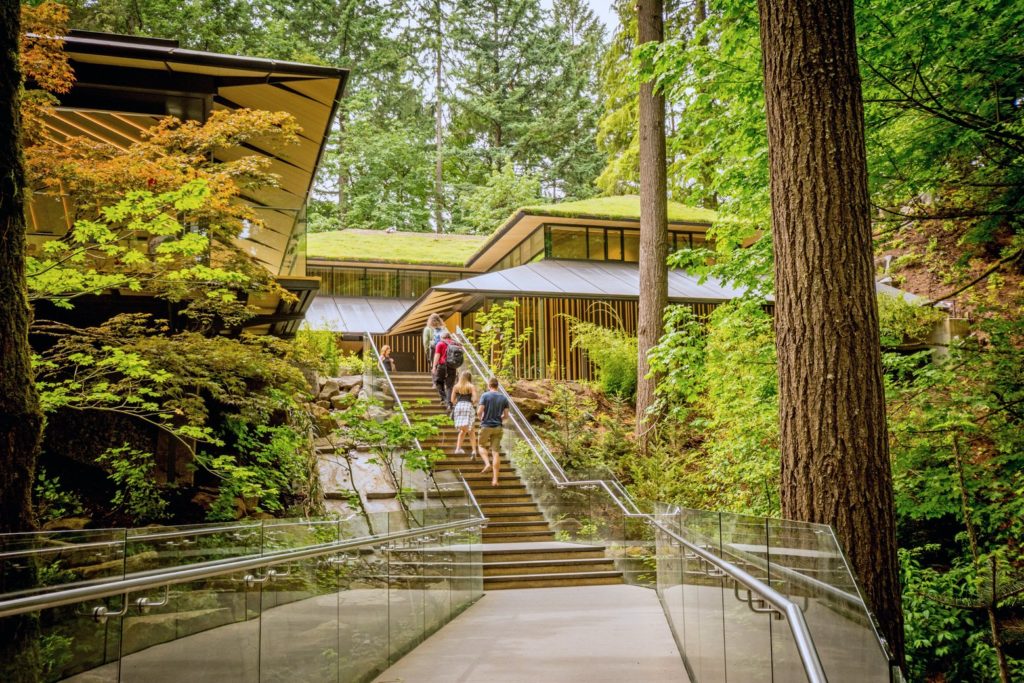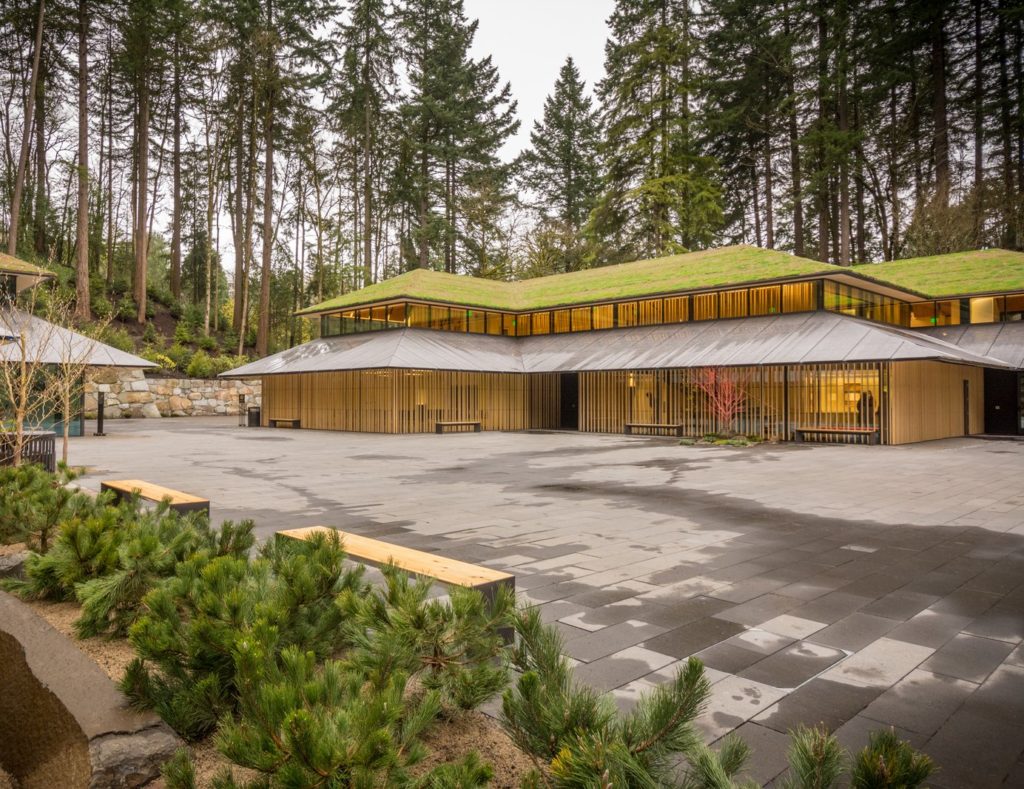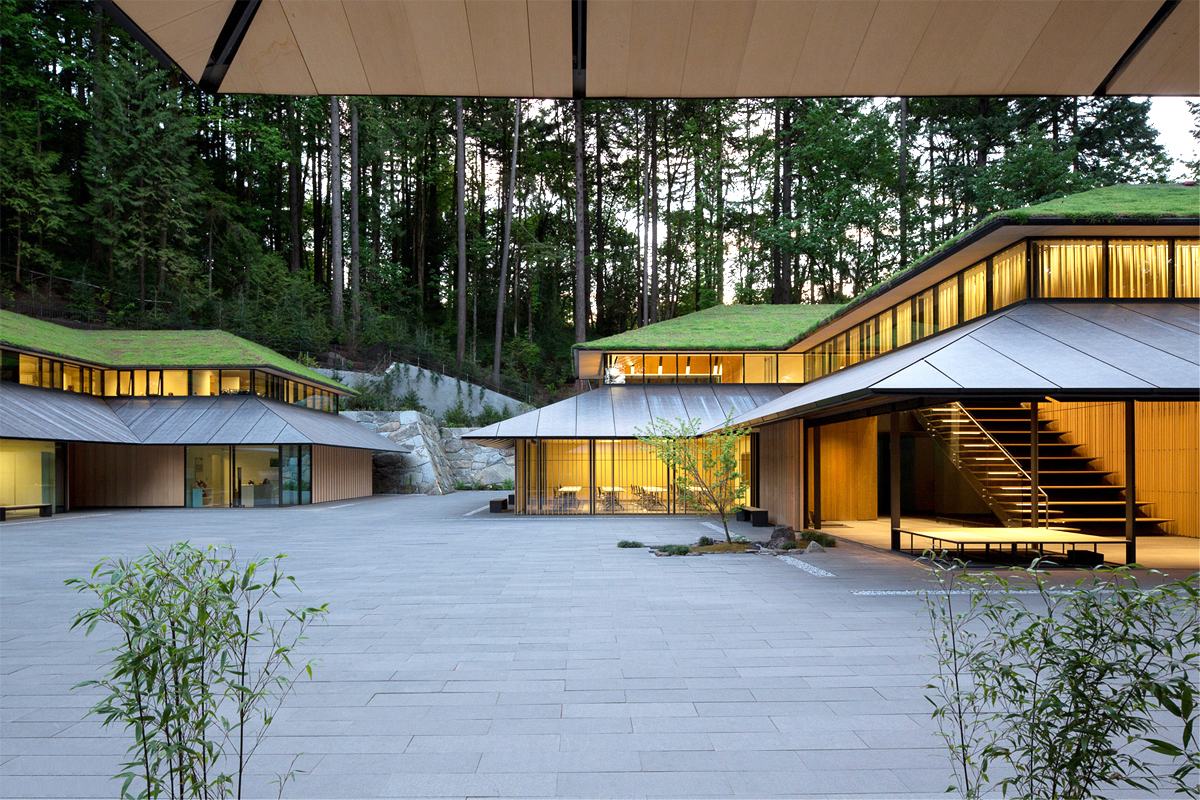Architects: Want to have your project featured? Showcase your work through Architizer and sign up for our inspirational newsletter.
Nestled in the hills of Portland, Oregon, is a gateway that transports visitors from the forests of the Pacific Northwest to the gardens of Eastern Asia. This tranquil parkland, known as the Portland Japanese Garden, was built in the aftermath of World War II as part of a country-wide initiative to improve American-Japanese relations. Its eight gardens — complete with bonsai trees, koi ponds and Zen rock landscapes — were designed by Professor Takuma Tono of Tokyo Agricultural University, and were heralded at the time as “the most beautiful and authentic Japanese gardens in the world outside of Japan.”

Photo by Bruce Forster.
In recent years, however, this increasingly popular tourist destination had outgrown its original site and, with over 350,000 annual visitors, was in desperate need of expansion. To oversee this expansion, including the addition of a library, cultural center and tea café, the Board of Trustees retained Kengo Kuma and Associates, a Tokyo-based architecture firm known for their commitment to craftsmanship and sustainability. The new facilities — built of steel, glass, stone and wood — are a masterful blend of contemporary design and Japanese traditions. To learn more about the creation of this deftly detailed “cultural village” continue reading below:

Photo by Bruce Forster.
Wooden Façades
Manufactured by Takumi Company
The largest and most central building in the complex is the Jordan Schnitzer Japanese Arts Learning Center, which contains classrooms, performance spaces and galleries dedicated to Japanese culture. Its façades are wrapped in screens of Alaskan yellow cedar, a naturally abundant wood that is often exported to Asia for the construction of temples and shrines.
Photo by Jeremy Bittermann.
Glass Façades
Manufactured by Vitrocsa
Behind the wooden screens are floor-to-ceiling walls of glazing. This façade system, known as Invisible Wall, allows for 12-foot-tall panes of glass to be supported by slender, 3/4-inch frames. At the corners of the façade, these massive walls slide open like traditional Shōji partitions, blurring the line between inside and outside. “Perceptually, the garden space passes through the buildings,” explain the architects.
Photo by James Florio.
Metal Roofs
Manufactured by Pure+Freeform
The distinction between interior and exterior is furthered obscured by deep roof eaves which are typical of Japanese architecture. These eaves appear to be clad in razor-thin slabs of stone but, in reality, they are constructed of marine-grade aluminum panels, printed with hi-resolution images of granite. Each has been treated with eight coats of Lumiflon, a clear resin which will prevent the photographic finish from weathering.
Photo by Bruce Forster.
Green Roofs
Manufactured by Komatsu Seiren
The upper portion of the building is capped by a green hip roof which seems to meld into the surrounding foliage. This lush rooftop, although intended to be a nod to the thatched roofs of Ancient Japan, relies on an innovative system of ceramic foam panels. In addition to supporting the growth of sedum, these porous panels reduce rainwater runoff and provide the building with an extra layer of insulation.
Photo by Laurie Isola; via OPB.
Stone Walls
Manufactured by Alpine Boulder Company
Construction on this site was made possible by a retaining wall that holds back the western slope. This massive wall, built with locally sourced granite, runs the length of the complex and rises to a height of 18 feet. Inspired by Japanese castle ramparts, the wall was constructed without mortar using a dry stacking technique known as “Ano-zumi.” It was assembled under the supervision of Suminori Awata, a 15th generation stone mason, and is the first of its kind to be built outside of Japan.
Photo by Jeremy Bittermann.
Interior Millwork
Manufactured by Nakamura Komuten, Straight Up Carpentry and Takumi Company
The same level of craftsmanship is present on the interior of the buildings. In the main lobby, for instance, visitors are greeted by a staircase of floating wood treads which doubles as seating for performances and lectures. The perimeter of the space is defined by slats of Port Orford Cedar, a sustainably harvested wood with a natural ginger fragrance. To the rear, an entry door is concealed in a wall of roughhewn chestnut whose textured surface was created using a traditional Japanese tool, known as a chona.
Photo by Jeremy Bittermann.
Suspended Ceilings
Manufactured by Takumi Company
Most of the interior spaces feature acoustic ceiling panels clad in FSC-certified bamboo veneers. The ceiling of the Umami Café, however, is constructed of the same Port Orford Cedar that was used in the lobby. At night, these wooden panels are backlit by white LEDs. During the day, natural light enters through a large skylight and is diffused by a Tyvek membrane, mimicking light passing through a traditional rice paper screen.
Photo by Bruce Forster.
Contract Furniture
Manufactured by Time & Style and George Nakashima
The juxtaposition of modern and traditional construction techniques is evident throughout the complex, especially in the Vollum Library, a space filled with books on Japanese art, culture and gardening. Here, visitors can sit in reading chairs, designed by Kengo Kuma and mass produced by a Japanese furniture company, around a large wooden table that was handcrafted by George Nakashima, a Japanese-American woodworker.
Architects: Want to have your project featured? Showcase your work through Architizer and sign up for our inspirational newsletter.
